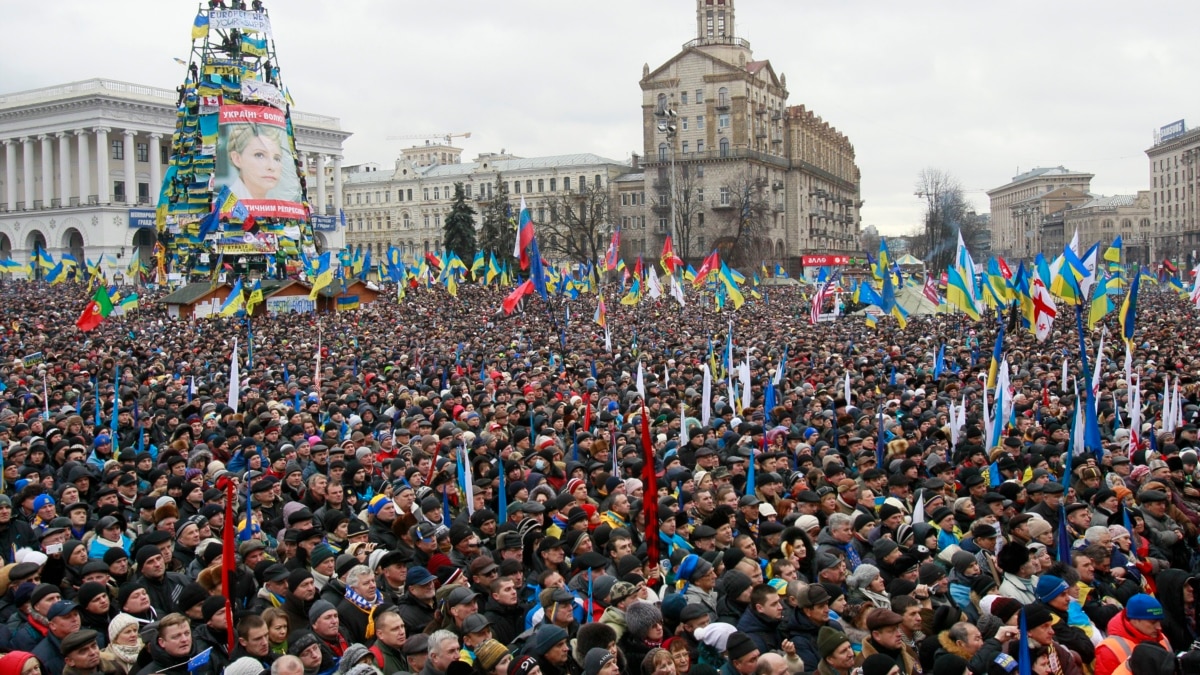Robert Kennedy Jr. Repeats Russia’s False Justification for Ukraine War

In a discussion with the popular Canadian YouTube commentator Jordan B Peterson on June 5, Robert F. Kennedy Jr., the U.S. presidential candidate, anti-vaccine activist and environmental lawyer repeated false talking points that Russia has used to justify its war on Ukraine.
Kennedy claimed the war was caused by the United States’ meddling in the events that followed the 2014 Maidan revolution:
“We [USA] put a new government in [Ukraine] that immediately makes a civil war against the Russian population of Donbas, bans the Russian language, kills 14,000 of them…”
Kennedy’s statement includes several false claims.
The United States did not put Ukraine’s government in place in 2014; the Ukrainian people elected it after the country’s parliament voted to remove its pro-Russian president, Viktor Yanukovych. The successor government of President Petro Poroshenko did not unleash the war in Donbas; Russia did. Nor did the Ukrainian government ban the Russian language in the Donbas or kill 14,000 Russians there between 2014-2022. That number represents the total number of deaths on both sides.
#1 “We put a new government in [Ukraine]…”
Kennedy twisted cause and effect in describing the events in Ukraine that led to the formation of a new government in 2014.
The Maidan popular uprising started in 2013 after Yanukovych, Ukraine’s widely unpopular and highly corrupt pro-Kremlin president, sabotaged the country’s European Union association agreement.
In February 2014, alleged pro-Yanukovych forces killed 77 protesters in Kyiv, sparking riots that resulted in Yanukovych fleeing to Russia, after which a majority in Ukraine’s parliament voted to remove him from office.
Russia accused the United States of meddling in Ukrainian politics, as did some American commentators. They pointed to Western officials’ support for the Ukrainian opposition, sometimes expressed in person in Kyiv, as did then U.S. Senator John McCain and then-U.S. Assistant Secretary of State Victoria Nuland.
In March 2014, after Yanukovych’s removal, Ukraine’s parliament, the Verkhovna Rada, appointed an interim government and Poroshenko was elected in snap elections held in May 2014.
Thus, regardless of how much the U.S. and other officials influenced the political establishment in Kyiv, the Ukrainian people elected Yanukovych’s successor in a vote that foreign observers said was free and fair.
In May 2019, Ukraine elected its sixth president, Volodymyr Zelenskyy, a former actor and comedian of Jewish descent.
#2 “…immediately makes a civil war against the Russian population of Donbas…”
Ukraine’s interim government, appointed by its parliament in March 2014, did not launch the war in Donbas.
Russia illegally annexed Crimea in March 2014 and clandestinely moved military forces into eastern Ukraine to aid the so-called separatist armed resistance in Donbas, thereby de-facto starting the war before the new government in Kyiv came to power.
Ukraine only launched military operations in Donbas in April 2014, in response to the Russian forces covertly seizing government buildings amid reports of fighting that caused civilian casualties and destroyed civilian infrastructure.
In November 2014, Igor Strelkov/Girkin, a Russian citizen and former Russian intelligence officer, admitted that he led a group of armed Russian operatives who entered Ukraine’s Donbas with a goal of starting a military conflict.
In August 2014, Russia moved regular army units into the Donbas, after Ukraine nearly defeated the Moscow-backed militant forces.
The European Court of Human Rights ruled in January of this year that part of Ukraine’s Donbas region has been under Russian jurisdiction since May 2014.
#3: “…bans the Russian language…”
In July 2012, the Verkhovna Rada adopted a Law on the Fundamentals of the State Language Policy that gave Russian the status of a “regional language” in those areas of Ukraine where Russian speakers exceeded 10% of the population. Yanukovych signed it into law the following month.
Ukrainian opposition members in parliament opposed the amendment, saying that it diminished the role of the Ukrainian language while making Russian a “second state language.”
With widespread availability of Russian state TV channels and news outlets, Ukraine had been struggling to reestablish its national identity and shake off Russia’s post-Soviet influence.
In 2012, several Ukrainian regions and cities, including in the Donbas (the entire Donetsk region and several towns in the Luhansk region), moved to recognize Russian as the official regional language.
On February 23, 2014, after Yanukovych’s flight to Russia, the Verkhovna Rada voted to repeal the Russian language law.
However, Ukraine’s then acting president, Oleksandr Turchynov, refused to approve the parliament’s decision.
As a result, the law remained in force for almost four more years, until February 28, 2018, when the Constitutional Court of Ukraine ruled that it was unconstitutional.
#4 “kills 14,000 of them [Russians]”
According to the United Nations, 14,200-14,400 people were killed in fighting in the Donbas between 2014 and 2022. That number represents estimated total fatalities, both Ukrainian and Russian.
That total included, the U.N. said, “at least 3,404 civilians, estimated 4,400 Ukrainian forces, and estimated 6,500 members of armed groups.”
Russia’s Investigative Committee reported in February 2022 that about 2,600 civilians were killed in the Donbas during the same period.
None of the reliable estimates includes a breakdown by ethnicity.
Most of the residents of the Donbas are Ukrainians. Russians are the largest minority, constituting 38.2% of the population in the Donetsk region and 39% in the Luhansk region.
This article has been archived for your research. The original version from Polygraph.info can be found here.



